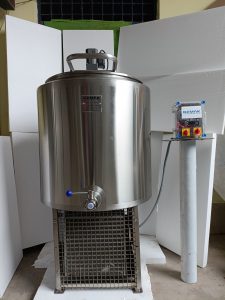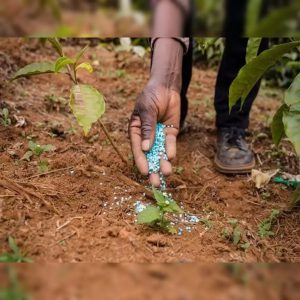According to RTI and government data, even in the best-case scenario, the Centre has spent only 50% of the amount that was allocated under PM Kisan from December 2018 to March 2020.

New Delhi: Less than three in 10 farmers received the Rs 6,000 that was due to them in the first full year of the implementation of the Centre’s flagship PM Kisan scheme, according to government data obtained by The Wire through the Right to Information Act.
In the first full year of implementation of the PM Kisan scheme – between December 1, 2018, and November 30, 2019 – the Narendra Modi government has only been able to spend 41% of the amount that it ought to have spent, as only slightly more than 25% of farmers have received all three installments under the scheme.
These conclusions come from data obtained by The Wire via the RTI Act as well as an analysis of data provided to parliament by the Ministry of Agriculture and Farmers’ Welfare.
The data also reveal that the pace of implementation of PM Kisan has slowed considerably since the Lok Sabha elections of 2019. Of the nine crore farmers registered under the scheme, more than half were registered in the first period of implementation that ended before the elections. The pace of registration thereafter has dipped.

About 75% of farmers have not received all installments
In the one year between December 2018 – when the scheme’s implementation period began – and the beginning of December 2019, only 3.85 crore farmers have received all three installments of Rs 2,000 each that they were entitled to.
When the PM Kisan scheme was launched, the government estimated that 14.5 crore farmers would benefit and receive Rs 6,000 per year in three equal quarterly installments.
But after its first year of implementation, only 26.6% of farmers had received all three installments, according to data as of November 30, 2019 – i.e., at the end of the third period and the first full year of PM Kisan – provided by the Ministry of Agriculture and Farmer’s welfare in an RTI response.
This could have been for a variety of reasons including poor bureaucratic implementation and/or a lack of appropriate documents on the part of farmers. Data shows that 44% of India’s farmers have received two installments, i.e., Rs 4,000, under the scheme in one year and 52% of farmers have received only one installment, i.e. Rs 2,000, between December 2018 and December 2019.
So, about 48% of the government’s potential beneficiaries did not receive even one installment in the first year of PM Kisan’s implementation.
According to data provided by the ministry, 7.6 crore farmers received one installment of Rs 2,000 in one year. As the government had estimated that 14.5 crore farmers would benefit under the scheme, this means that 6.8 crore farmers did not receive even one installment under the PM Kisan scheme in its first year of implementation.
If all 14.5 crore farmers had received the entire benefit of PM Kisan in the first year, as the government had envisaged, spending on the scheme would have been Rs 87,000 crore, i.e., Rs 6,000 x 14.5 crore. But the actual spending has been only 41% of that, at Rs 36,000 crore till the end of November 2019.
The slow pace of implementation after the elections
The PM Kisan scheme was launched by Prime Minister Narendra Modi on February 24, 2019, with only a few weeks to go before polling began in the Lok Sabha elections.
To ensure that the first tranche of payment reached voters before they went to the polling booths, the scheme was implemented with retrospective effect, and the first installment pertained to the period between December 2018 and March 2019.
This meant that for the implementation of the scheme in the first period, the government effectively only had five weeks. Ironically, however, it was in this period that most of the farmers were registered under PM Kisan.
Despite having to start from scratch and only possessing a very limited capacity to implement a pan-India scheme of this magnitude, the Ministry of Agriculture and Farmers’ Welfare managed to get 4.74 crore farmers registered between February 24 and March 31 of 2019, before the Lok Sabha elections.
The pace slowed considerably thereafter. In the second period – when the government had the full four-month period at its disposal as against only five weeks in the first period – 3.08 crore new farmers were registered. The government only managed to register 1.19 crore farmers, or a fourth of the number that it registered in the first period in five weeks, in the third period that ended in November 2019.
So, more farmers were registered under PM Kisan in the five weeks before the Lok Sabha elections than in the eight months after the elections.
The government has claimed that one of the reasons for the slow pace of implementation was the cumbersome and often error-prone process of Aadhaar-based authentication and verification, which had become mandatory starting the second period of implementation after the elections. Aadhaar linking was kept optional in the first period before the elections.
However, this requirement was relaxed in October, implying that Aadhaar linking was not required for the third period of implementation. The registration of farmers in the third period, however, failed to pick up, and in the end, only 1.19 crore ended up being registered in the third period, a fourth of how many were registered in the first period in just five weeks.
Another reason given by the agriculture ministry for the slow progress is that the government may have overestimated the number of farmers in the country in the beginning. The Wire’s earlier analysis based on Census data and the agriculture ministry’s definition of ‘farmer’ shows that there are likely to be more, and not fewer, farmers in the country than what the government had initially estimated.
Part of the blame for the slow progress has also to be borne by some states which have employed a lackadaisical attitude in providing the Centre with the data required. West Bengal, for example, has not provided the details of even one farmer as it has refused to participate in the Centre’s scheme. So, even though according to the government’s estimates there ought to be 68 lakh farmers in West Bengal, there are zero beneficiaries under PM Kisan, so far, from the state.
As long as the states do not provide the data, the Centre cannot transfer the money. Technically, it is only when the money is demanded by states that the transfer can be made.
BJP-ruled states too are guilty on this count. The states of Karnataka, Uttar Pradesh, Bihar, and Maharashtra account for about 2.5 crore of the five-crore deficit in farmer registration. Bihar alone accounts for a massive 1.13 crore. Of the estimated 1.5 crore farmers in the state, only 44 lakh have been registered.
Six crore farmer families in the fourth installment?
Now, for the fourth installment, made for the December 2019-March 2020 period, Prime Minister Narendra Modi has announced the transfer of Rs 2,000 into the accounts of six crore farmers in January 2020. This came after the first three four-month periods, i.e. the first full year of PM Kisan, were over.
Now, Modi has transferred Rs 12,000 crore into the accounts of six crore farmers in January in the fourth period of implementation. It is not quite clear why the transfer went only to six crore farmers as at least nine crore farmers who had registered by November 30 were entitled to it. The number would be even greater since more farmers would have been registered after November 30. That data is not yet available.
Even if the Rs 12,000 crore transfer is taken into account, the government has spent only 50% of the amount that had to be spent under PM Kisan till March 2020. For 2018-19 and 2019-20, a total allocation of Rs 95,000 crore had been made and now a little over Rs 48,000 crore has been spent.
A massive Rs 47,000 crore of allocated money remains unspent at a time when several economists including Nobel laureate Abhijit Banerjee have argued that spending under PM Kisan needs to be increased to put more money in the hands of people to boost demand in a stumbling economy.
Source: The Wire
Link:https://thewire.in/economy/pm-kisan-farmers-instalments-modi-government



